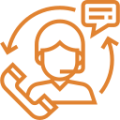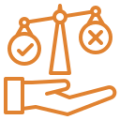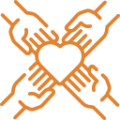Roles and Responsibilities
People Ops is an important part of how a business is run, linking the management of people with achieving company goals. The goal is to help employees grow both professionally and personally, which makes them feel valued and part of the team.
From my experience, setting up People Ops can be a little difficult. It starts with hiring the right people. Then, it’s super important to keep building our team members. I can’t stress enough how smart it is to invest in training to keep their skills sharp and in sync with industry patterns.

Take this tech startup I worked with to give you an example. They nailed their People Ops strategy and rolled out a solid onboarding process with mentorship and clear career paths for new hires. The outcome? Their employee retention rates soared and their team’s job satisfaction shot up in a big way.
The link between People Ops and business success is pretty clear. Employees who feel free and in tune with their company’s mission like to perform better. I’ve seen that focusing on People Ops can really help with morale and overall business success. In today’s changing work environments, People Ops can really help with both team spirit and business outcomes.
Why Move to People Ops?
To understand People Ops, you first need to understand its relevance. The concept picked up steam in the mid-2000s when Laszlo Bock at Google rolled out some cool ideas, creating a strategy all about making workplace processes more human. This method makes sure employees feel valued and supported from the second they join the team.
At its core, People Ops touches on every part of managing employees, from hiring and welcoming new team members to helping them grow and managing their exit. It means making a people strategy that lines up with company goals, updating HR technology for smoother operations, and collecting data to help with overall work. The roles in a People Ops team range from People Operations Managers, who keep the team together, to People Operations Analysts, who dig into data to keep things compliant and efficient.

The success of this strategy is clear. When employees are happier at work, the company usually sees better profits and productivity. Keeping an eye on important metrics like hiring speed, hire quality, and turnover rates gives valuable plans that help shape and change the strategy. Moving toward People Ops practices clearly lifts workplace morale, which makes for a way more positive environment.
Track and Measure Employee Satisfaction
Focusing on employee satisfaction is super important in People Ops – it really plays a big part in creating a healthier workplace that ramps up productivity. I personally find that a mix of surveys, one-on-one meetings, and real-time performance data really helps get meaningful feedback from the team.
Take surveys, for example – they’re awesome because they set up regular ways for us to talk. This makes it a lot easier to spot and deal with problems early on before they get worse.
Then there are the one-on-one meetings – these cozy conversations let us talk about any issues employees might be facing. It’s a great opportunity for them to openly talk about what they want to achieve and the hurdles they’re facing. Mixing plans from these conversations with survey data gives me a complete picture of employee satisfaction at any time.

Real-time performance metrics are equally smart to follow. Tools like Lighthouse are super helpful for keeping track of different performance markers, providing another way to check out how happy employees are. To give you an example, a dip in these metrics might point to problems like job dissatisfaction or even burnout, pushing me to step in quickly.
In People Ops, making decisions based on data is smart, but adding a personal touch is just as major. I always try to match wellness programs, career development opportunities, and work-life balance efforts with the feedback and metrics we collect.
I also want to keep things clear and keep the conversation going in all People Ops activities. This strategy improves employee satisfaction and also increases their involvement and loyalty to our company goals.
Do People-First Practices
Changing the culture of a company to pay attention to the health of every team member is a huge benefit. It’s kind of like leading a big ship – it takes dedication and effort from everyone, especially from those at the top. Leaders need to endorse and also actively get involved in creating a people-first culture, setting a strong example. I’ve seen firsthand how a leader’s active participation can really help with team morale and build trust.
Now, let’s talk about why feedback is important. Communicating regularly with your team to understand their needs and quickly fixing any issues creates a regular cycle of feedback. These responsive actions really help employee satisfaction.
It’s also a big deal to recognize and appreciate the efforts of your team members. Even something as easy as a heartfelt “thank you” or a public shout-out can make a big difference in the work atmosphere and help with engagement. Our hiring practices should be welcoming, too – this can really change the workplace.

Then there’s our managers’ part. Improving managerial skills to spot and support individual talent is important for both personal and organizational growth.
Also, it’s smart to roll out a tough data strategy to check how well these people-first initiatives are working. All these changes lead to better engagement and also help with the overall performance of the organization – these changes can really change the workplace environment in a big way.
Create a Sustainable DEIB Strategy
People Ops really plays a big part in boosting Diversity, Equity, Addition, and Belonging (DEIB) at work. I’ve seen firsthand how a solid DEIB strategy can change the tone of a company, making employees happier, helping with productivity, and launching new ideas.
In my experience, actions like cutting down on microaggressions and supporting Employee Resource Groups (ERGs) are major parts of a smart DEIB strategy. Also, giving leaders a pat on the back for their attention to DEIB – maybe with bonuses or during performance reviews – really embeds this effort into the company’s core.
Being able to look at data through People Ops platforms makes it easier to set specific targets and keep an eye on your progress. You can use the info you gather to better your strategies for keeping hold of staff from underrepresented groups, and that really helps cut turnover rates.

Teaching team members to spot and deal with microaggressions and making choices with leadership based on DEIB data is important. One thing that works well is getting anonymous feedback on workplace culture. This feedback gives a real look at the tone around the office, letting you fix things that really change how your teams work together.
Keeping regular attention to improvement is a good idea. Keeping the door open for DEIB conversations leads everyone to share what they think and feel, which is super helpful in creating a welcoming place to work. Addressing big issues like fair pay and making sure there’s enough support and resources means everyone feels secure, appreciated, and respected.
Besides, keeping an eye on how well your initiatives like diversity workshops are doing lets you change your strategies so they’re more useful. Making sure DEIB stays high on the business agenda and revisiting and changing your plans regularly will make sure your efforts are both lasting and really helpful in the long run. This improves how much everyone feels they belong and also lays the groundwork for a different and welcoming work environment.
Data Decisions in HR
Data decisions in HR have really become a big part of how modern People Ops teams get things done – leading everything from hiring to employee development to meet broader business goals. When I think about HR data, it strikes me how it can be a rich source of metrics and analytics that help make smart, strategic choices. These plans are valuable in how organizations draw, keep, and develop their workforce.
Let’s talk recruiting for a bit. It means looking through different sourcing channels and finding candidates who have the right technical skills and also fit well with the company’s culture and future. I’ve seen firsthand how this focused strategy can cut down on turnover and help with long-term employee satisfaction.

Data is equally important when it comes to nurturing existing talent – companies dig into performance reviews, training outcomes, and career paths to spot potential leaders, address skill shortages, and customize career development programs. This improves the team’s overall expertise and also improves job satisfaction and motivation.
Speaking of keeping people motivated, reliable data gives HR a clear picture of the team’s morale. Companies that are good at this often see fewer absences and more productivity – signs of a strong workplace culture.
Moving on to performance management, data helps leaders conduct precise, meaningful reviews. Instead of just going with their gut, they use data to spot exactly where a team or individual can do better, which will make sure that personal achievements are in line with company goals. The growing use of analytics tools in HR processes also shows how big a change data has on managing people today.
Who Is Excelling in People Ops?
When I think about the companies that excel in People Ops today, a few great names keep popping up because of their awesome People Operations. Companies like Google, Salesforce, and Cisco set the bar high. They’ve nailed the balancing act of boosting business performance while making sure their employees are healthy and productive.
Take Google as an example. It is kind of obvious since it was a Google employee who invented People Ops. What’s really cool about their strategy is how they mix employee empowerment with accountability. It reminds me of a road trip I took – I had my GPS, and I could take any detour I wanted. This is similar to the idea behind People Ops – the strategy lets employees steer their own careers, but it also helps to make sure that their decisions finally line up with the company’s big goals.

Cisco made it to the top of the 2021 Best Places to Work List, which says a lot. Their People Ops data strategies hit home, creating policies that people really appreciate. When I looked into their methods, I thought, “They totally get what they’re doing!” Their employee satisfaction rate is an impressive 96%. It looks like they’ve found the perfect recipe for a happy workplace.
And then there’s Salesforce. They’re awesome at taking care of their employees’ health and professional growth. Salesforce is ranked second on the Great Places to Work list, clearly showing their strategy works: they create an environment where employees are pumped to come in because they feel supported and know that their growth is important.
These companies have shown me that successful People Ops strategies share some important features: a real commitment to empowering employees, steady technology, and solid development programs.
Champion Change for Smooth Transitions
What about your workplace? Maybe it’s time to bring some more heart and empathy. Just picture creating a place where everyone, from interns to top executives, feels valued and plugged in. Pretty tempting, right?

This is where HRDQ-U comes in. Think of us as your friends in building a workplace that’s all about learning and growing. Why not check out our resources? Join a community that’s about advanced HR strategies and leadership skills.
And don’t miss our webinar, Order Out of Chaos: A New Way to Assess Training Needs to Build Programs that Actually Deliver, presented by Scott Provence. It’s a great chance for you to step up your game in your career and shake up the success formula in your company. Watch the webinar today and see how you can make a difference!
For more tips and insights on how to steer your organization to greater success, check out our leadership skills webinars and blog posts.

































